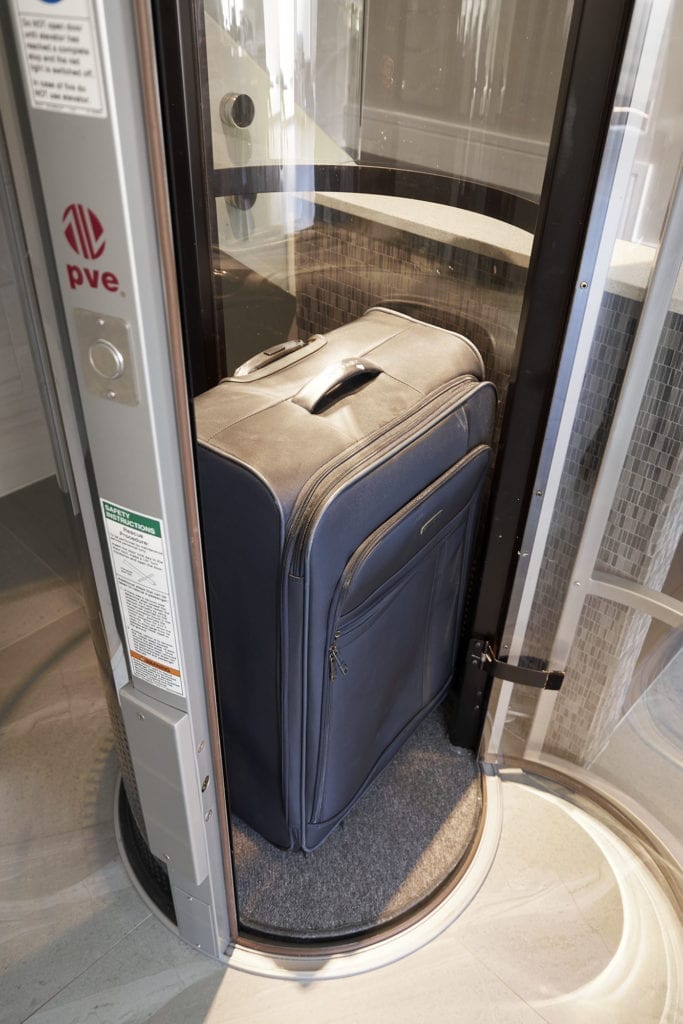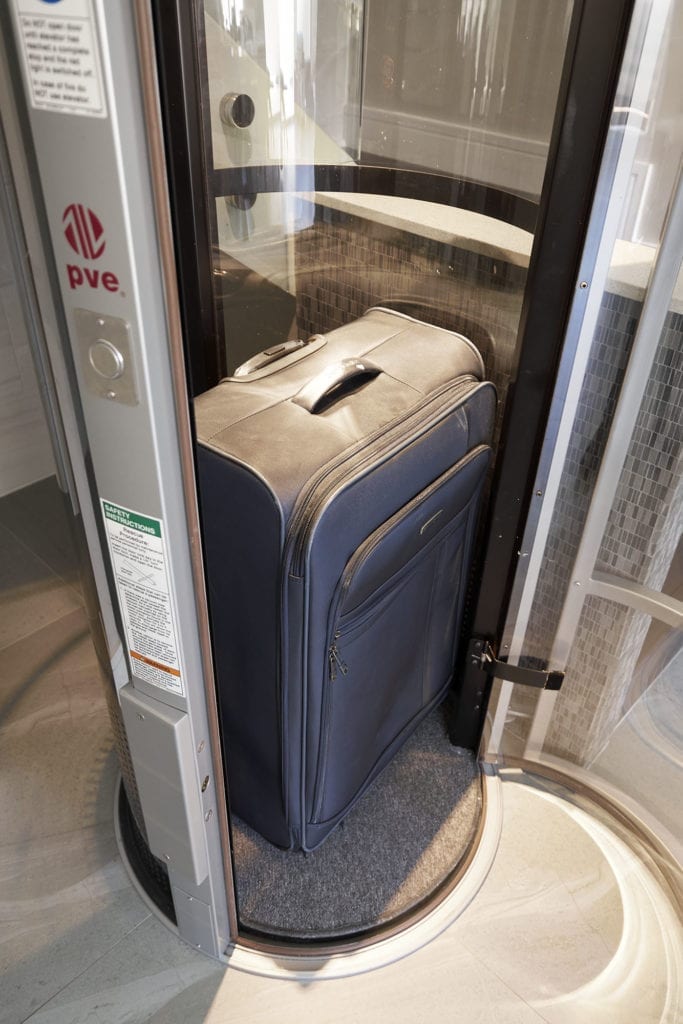Thinking about adding a dumbwaiter to your home? This handy little elevator can save you countless trips up and down the stairs, especially if you have multiple floors. But before you get too excited, it’s important to understand the cost involved.
This comprehensive guide will delve into everything you need to know about dumbwaiter costs, from factors affecting the price to considerations for budgeting. We’ll also explore the range of costs for different types of dumbwaiters and installation processes.
By the end of this article, you’ll be a dumbwaiter cost expert, ready to make an informed decision about adding this convenient feature to your home.
Factors Affecting Dumbwaiter Cost

The cost of a dumbwaiter can vary significantly depending on several factors. Here are the key elements that will influence the final price:
- Type of Dumbwaiter: There are two main types of dumbwaiters: electric and manual. Electric dumbwaiters are more common and operate with a motor, offering a smooth and effortless ride. Manual dumbwaiters are operated by a rope system and are less expensive, but require more effort to use.
- Size and Capacity: The size and weight capacity of the dumbwaiter will significantly impact the cost. Larger dumbwaiters that can carry more weight will be more expensive. Consider the items you plan to transport most often to determine the necessary size and capacity.
- Number of Floors: The number of floors the dumbwaiter needs to travel between will also affect the cost. More floors typically require a more complex installation and additional materials, leading to a higher price.
- Features and Customization: Some dumbwaiters offer additional features like automatic doors, different finishes, or phone call functionality. These add-ons can increase the overall cost.
- Installation Difficulty: The complexity of installing the dumbwaiter will influence the price. Factors like existing wall space, required electrical work, and any necessary structural modifications can add to the installation cost.
- Location: Labor costs can vary depending on your geographic location. Getting quotes from local contractors will give you a clearer picture of installation pricing in your area. For example, if you are in California, you can reach out to local dumbwaiter vendors in California for getting estimates and quotes.
Dumbwaiter Cost Range

Now that you understand the factors affecting dumbwaiter cost, let’s explore the typical price range.
- Low-End: For a basic, small, manual dumbwaiter with a limited weight capacity serving just a few floors, you can expect to pay around $2,000 to $4,000, including installation.
- Mid-Range: The most common price range for residential dumbwaiters falls between $8,000 and $12,000. This range typically covers electric dumbwaiters with a moderate weight capacity serving two to three floors.
- High-End: High-end, custom-built dumbwaiters with larger capacities, advanced features, and luxurious finishes can cost upwards of $20,000.
Remember: These are just ballpark figures. The actual cost for your specific dumbwaiter will depend on the factors mentioned earlier.
Dumbwaiter Cost Breakdown
Here’s a breakdown of the typical costs associated with a dumbwaiter installation:
- Dumbwaiter Unit: This is the cost of the dumbwaiter itself, which can range from a few thousand dollars to tens of thousands, depending on the type, size, and features.
- Installation Labor: The labor costs for installing the dumbwaiter can vary depending on the complexity of the project. Expect to pay an hourly rate for skilled technicians.
- Electrical Work: Most electric dumbwaiters require electrical wiring and connections. This cost will depend on the existing electrical infrastructure in your home.
- Permits and Inspections: Depending on your location, you may need to obtain permits and have inspections conducted after installation. Factor in these potential costs when budgeting.
Considerations for Budgeting Your Dumbwaiter

- Define Your Needs: Clearly define what you need from your dumbwaiter. Consider the size, capacity, number of floors, and desired features. This will help you narrow down your options and budget accordingly.
- Get Multiple Quotes: Contact several reputable dumbwaiter companies in your area to get quotes. This will give you a good sense of the prevailing market rates and allow you to compare options.
- Factor in Maintenance Costs: While dumbwaiters are generally low-maintenance, there may be occasional service needs. Consider budgeting for potential future maintenance costs.
- Long-Term Value: Think about how a dumbwaiter can improve your home’s functionality and value. While the upfront cost may seem high, a well-designed dumbwaiter can be a worthwhile investment.
Additional Considerations
- DIY Installation: Consider the expertise and tools needed for safe and proper installation. Hiring a qualified professional is generally recommended to ensure safety and avoid any potential issues.
- Code Compliance: Ensure the chosen dumbwaiter and installation process comply with all local building codes and safety regulations.
- Aesthetics: Dumbwaiters can be both functional and aesthetically pleasing. Consider the overall design of your home and choose a finish that complements your space.
Financing Options for Your Dumbwaiter
If the upfront cost of a dumbwaiter seems daunting, several financing options might be available:
- Home Improvement Loans: Some lenders offer home improvement loans specifically for renovations and upgrades. These loans can be used to finance the cost of your dumbwaiter.
- HELOC (Home Equity Line of Credit): If you have equity in your home, you might consider a HELOC to access funds for your dumbwaiter project.
- Payment Plans: Some dumbwaiter companies offer financing plans with manageable monthly payments.
Benefits of Owning a Dumbwaiter
While the cost is a significant factor, consider the numerous benefits a dumbwaiter can offer your home:
- Convenience: A dumbwaiter eliminates the need for carrying groceries, laundry, firewood, or other items up and down the stairs, saving you time and effort.
- Accessibility: For individuals with mobility limitations, a dumbwaiter can improve accessibility within the home, making it easier to transport items to different floors.
- Increased Value: A well-designed dumbwaiter can be a valuable addition to your home, potentially increasing its resale value.
- Space Optimization: Dumbwaiters utilize vertical space efficiently, making them ideal for homes with limited floor space.
Dumbwaiters vs. Other Options
If you’re considering solutions for transporting items within your home, here’s a quick comparison of dumbwaiters with other options:
- Stairlifts: Stairlifts are ideal for individuals with mobility limitations who need assistance navigating stairs. However, they are not suitable for transporting objects.
- Laundry Chutes: Laundry chutes are a cost-effective option for transporting laundry between floors. However, their use is limited to specific items.
- Basket Hoists: Basket hoists provide a temporary solution for lifting heavy items occasionally. However, they are not as convenient or permanent as a dumbwaiter.
Maintaining Your Dumbwaiter
Once you’ve invested in a dumbwaiter, proper maintenance is crucial to ensure its longevity and functionality. Here are some key maintenance tips:
- Regular Inspections: Schedule regular inspections by a qualified technician to identify and address any potential issues before they escalate.
- Cleaning and Lubrication: Keep the dumbwaiter clean and lubricate moving parts as recommended by the manufacturer’s instructions.
- Overloading Prevention: Avoid overloading the dumbwaiter beyond its weight capacity to prevent damage and ensure safety.
Conclusion
By understanding the factors affecting cost, exploring the budgeting considerations, and weighing the various benefits, you can make an informed decision about adding a dumbwaiter to your home. Remember, a dumbwaiter is not just a convenience, but a potential investment in your home’s functionality and value.
Do your research, compare quotes from qualified professionals, and choose a dumbwaiter that fits your needs and budget. With proper planning and maintenance, your dumbwaiter can become a valuable asset in your home for years to come.
Dumbwaiter Cost FAQs
How much does it cost to build a dumbwaiter?
The cost to build a dumbwaiter can vary significantly depending on several factors. We’ve covered these factors in detail earlier in the article. In general, expect a range of $2,000 to $4,000 for a basic manual dumbwaiter with a limited capacity, to upwards of $20,000 for a high-end, custom-built model with advanced features.
How much does a commercial dumbwaiter cost?
Commercial dumbwaiters typically cost more than residential models due to their larger size, higher weight capacity, and stricter safety regulations. They can range from $20,000 to over $100,000 depending on the specific requirements.
Is a dumbwaiter worth it?
The value of a dumbwaiter depends on your individual needs and priorities. If you frequently carry items between floors and find it inconvenient or strenuous, a dumbwaiter can be a worthwhile investment. It can also improve accessibility for those with mobility limitations and potentially increase your home’s resale value. Consider the long-term benefits alongside the upfront cost to determine if a dumbwaiter is right for you.
Do people still use dumbwaiters?
Absolutely! Dumbwaiters remain a popular choice for both residential and commercial applications. They offer a convenient and efficient way to transport items between floors, especially in multi-story homes or businesses.
Why are dumbwaiters so expensive?
Several factors contribute to the cost of a dumbwaiter. The materials, size, and capacity all play a role. Additionally, the installation process can be complex, requiring skilled labor and potentially modifications to your home’s structure.
Are dumbwaiters safe?
Modern dumbwaiters are designed with safety in mind and incorporate features like automatic doors, overload protection, and emergency stop buttons. When installed and maintained properly, dumbwaiters are safe for everyday use.
Are dumbwaiters rare?
Dumbwaiters are not uncommon, especially in older homes or buildings designed with multiple floors. While not ubiquitous, they remain a valuable solution for specific needs.
How much weight can a dumbwaiter hold?
The weight capacity of a dumbwaiter varies depending on the model. Residential dumbwaiters typically range from a few hundred pounds to 500 pounds, while commercial models can handle much heavier loads.
Why is it called a dumbwaiter?
The exact origin of the term “dumbwaiter” is unclear, but there are two leading theories. One suggests it refers to the fact that the dumbwaiter carries items but doesn’t require a person to operate it. Another theory proposes it comes from the Old English word “dumb,” meaning silent, referencing the quiet operation compared to clanking service elevators.
Who invented the dumbwaiter?
There’s no single inventor credited with the dumbwaiter. Similar lifting devices have existed for centuries, with improvements and advancements made over time.
How big is a dumbwaiter?
The size of a dumbwaiter depends on its purpose and capacity. Residential dumbwaiters are generally compact, with platforms measuring around 2ft x 3ft to accommodate common household items. Commercial models can be much larger to handle bulkier loads.








